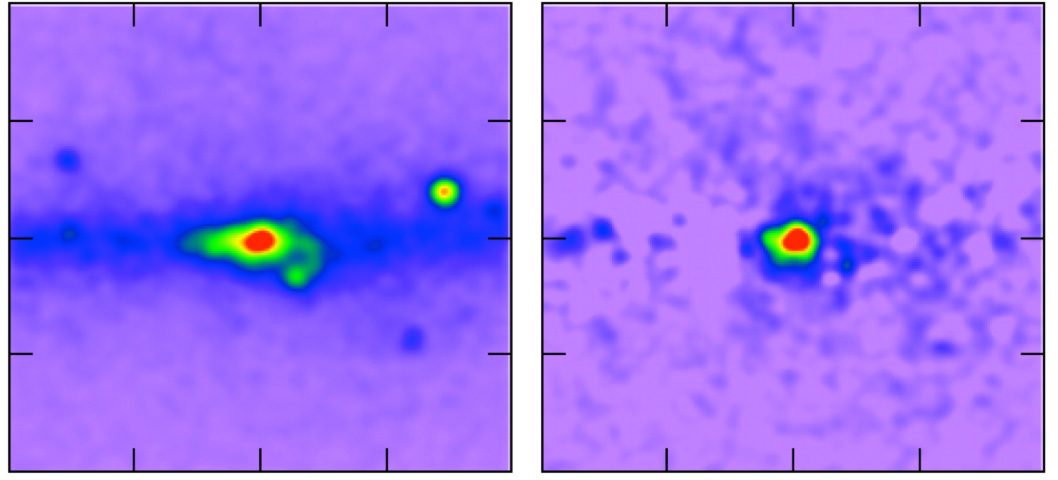
 Credit: T. Daylan et al.; Fermi Space Telescope; NASA/DOE
Credit: T. Daylan et al.; Fermi Space Telescope; NASA/DOE
Dark Matter Signal?
The gravity of the Universe is dominated by dark matter, stuff that only feels the warping of spacetime we call gravity. Dark matter does not produce electromagnetic radiation, so is difficult to see by normal methods. Dark matter holds galaxies and clusters of galaxies together, and forms the cosmic web of the Universe, which allows normal matter to coalesce into galaxies, stars and planets. Though we can see the effects of dark matter on the motions of galaxies and clusters of galaxies, no one is quite sure of what dark matter is made. The leading model is some type of strange sub-atomic particle, called a Weakly-Interacting Massive Particle, or WIMP. WIMPS can have anti-WIMPS, and if they meet wandering around in the dark, they will annihilate, converting their mass into radiation (and possibly other subatomic particles). In some models, WIMP annihilation produces Gamma ray emission, and this radiation, emitted from enormous swarms of dark matter particles in our Galaxy (and possibly elsewhere) might be detected by space-based Gamma ray observatories like the Fermi Gamma ray Space Telescope. The image above left shows the highest resolution Gamma ray image of the center of the Milky Way yet obtained by Fermi. Scientists have tried to account for all the known sources of Gamma rays in this region, but (as shown by the image on the right) there seems to be an excess of Gamma rays left over. Could this be the long-awaited signal of dark matter annihilation?
Published: March 24, 2014
<
HEA Dictionary ● Archive
● Search HEAPOW
● Other Languages
● HEAPOW on Facebook
● Download all Images
● Education ● HEAD
>

Each week the HEASARC
brings you new, exciting and beautiful images from X-ray and Gamma ray
astronomy. Check back each week and be sure to check out the HEAPOW archive!
Page Author: Dr. Michael F. Corcoran
Last modified Tuesday, 27-Feb-2024 10:06:38 EST


